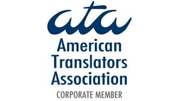Translators regularly come across errors, omissions and other indications of documents that are works in progress in the source language. My favourite is when I discover a chunk of Lorem ipsum, the classic placeholder or filler text, which the author has forgotten to replace with the desired final wording. This got me wondering about the origins of this Latin content – who devised it, how did it become so widespread and, most intriguingly, what does it mean? The story turned out to be hotly disputed.

The first thing to note is that, while the text does indeed contain Latin words, much of the content is gibberish. Indeed, the word lorem itself does not exist in Latin and is a truncation of dolorem. The source text is said to be De finibus bonorum et malorum, written in the 1st century BC by the philosopher Cicero. The oracle that is Wikipedia suggests that a 1914 edition of Cicero’s work is the likely source for Lorem Ipsum as the text breaks off at the bottom of one page with “Neque porro quisquam est qui do-“, and continues on the subsequent page with “lorem ipsum”. It has even been speculated that an unbound proof copy (where the individual pages had come out of order) may have been the physical source of the text, which was popularised in the 1960s by the Letraset company to show off its many typefaces.
There are plenty of other internet sources claiming the text’s origins go back much further; to the 1500s in fact. Some people suggest a printer took the Cicero text and jumbled it to create the half Latin, half nonsense that we know and love. The London Review of Books is one of many to confidently declare that printers and typesetters have been using Lorem ipsum since the 16th century. The LRB also refer to a splendid translation effort by Cambridge postgraduate Jaspreet Singh Boparai, but in his own account of tackling the Lorem Ipsum text, he concurs with the 1960s origin story. Boparai also describes how Ciceronian philosophical writings are impenetrable at the best of times, suggesting that this made De finibus bonorum et malorum the “perfect template for nonsense”. Professional translators will readily sympathise with Boparai’s conclusion on reading Cicero, “it is easy to lose the thread of the argument, once you tire of how long the sentences are.”
Whatever the true age of the text, it is useful as a placeholder for checking print layouts because it contains a realistic distribution of letters, which makes it look like readable English (or another European language) without distracting the proofreader with genuine text. If you need a chunk of Lorem Ipsum, you can use a generator or just copy a section from someone else’s website and repeat it as often as required. Even more fun can be had with the spoof Lorem Ipsum spin-offs, such as the sweary Samuel L. Ipsum generator or the corporate lingo generator packed with gems like “We need to aspirationalise our offerings”.








